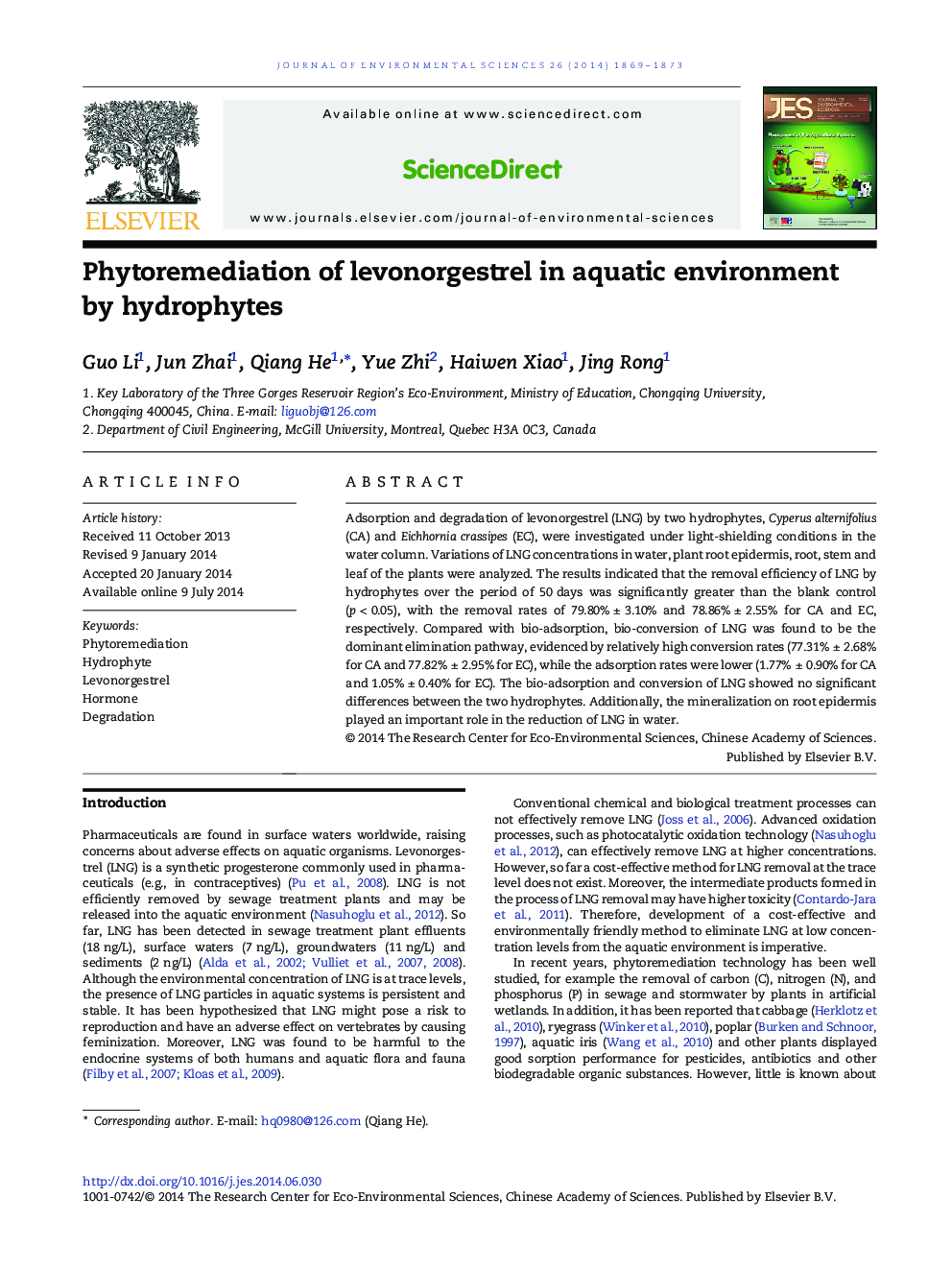| Article ID | Journal | Published Year | Pages | File Type |
|---|---|---|---|---|
| 4454522 | Journal of Environmental Sciences | 2014 | 5 Pages |
Adsorption and degradation of levonorgestrel (LNG) by two hydrophytes, Cyperus alternifolius (CA) and Eichhornia crassipes (EC), were investigated under light-shielding conditions in the water column. Variations of LNG concentrations in water, plant root epidermis, root, stem and leaf of the plants were analyzed. The results indicated that the removal efficiency of LNG by hydrophytes over the period of 50 days was significantly greater than the blank control (p < 0.05), with the removal rates of 79.80% ± 3.10% and 78.86% ± 2.55% for CA and EC, respectively. Compared with bio-adsorption, bio-conversion of LNG was found to be the dominant elimination pathway, evidenced by relatively high conversion rates (77.31% ± 2.68% for CA and 77.82% ± 2.95% for EC), while the adsorption rates were lower (1.77% ± 0.90% for CA and 1.05% ± 0.40% for EC). The bio-adsorption and conversion of LNG showed no significant differences between the two hydrophytes. Additionally, the mineralization on root epidermis played an important role in the reduction of LNG in water.
